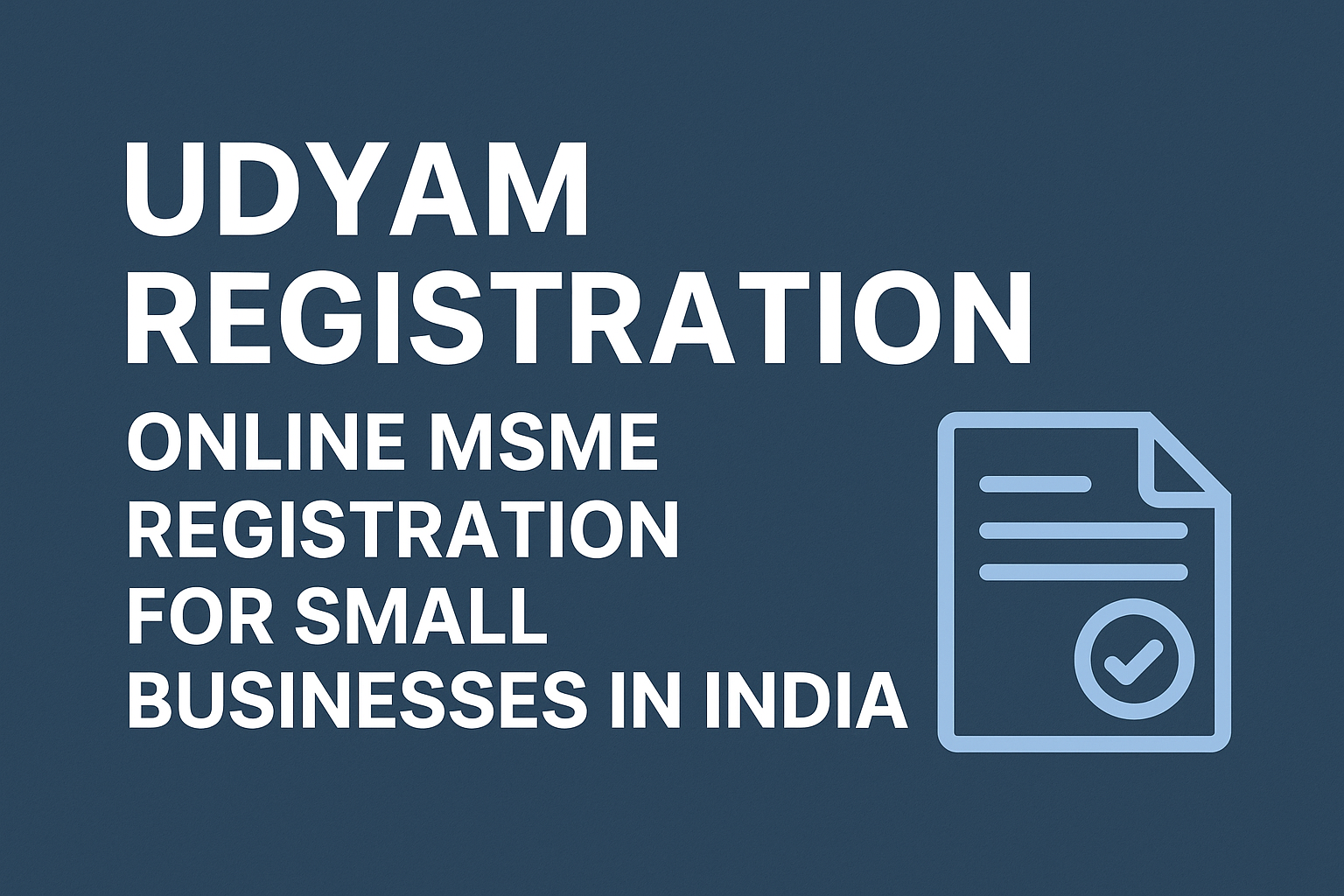India’s Micro, Small, and Medium Enterprises (MSMEs) are the unsung heroes of economic development. They not only contribute significantly to the GDP but also play a vital role in generating employment, promoting exports, and fostering innovation. To ensure that small businesses receive the recognition and support they deserve, the Government of India introduced Udyam Aadhar — a simplified, digital, and transparent process for MSME classification and certification.
This initiative aims to empower entrepreneurs by giving them easier access to government schemes, financial aid, and market opportunities. In this article, we will explore everything about Udyam Registration, its process, benefits, and how it is transforming the future of small businesses in India.
What is Udyam Registration?
Udyam Registration is the government’s official system for registering Micro, Small, and Medium Enterprises under the Ministry of MSME. It replaced the earlier Udyog Aadhaar registration system to make the process more efficient, integrated, and automated.
The registration provides a unique identification number (Udyam Registration Number) and an official certificate that validates a business as an MSME. This recognition opens the doors to several government benefits such as subsidies, tax exemptions, priority lending, and participation in public procurement programs.
Objectives Behind Udyam Registration
The government launched Udyam Registration with the vision of creating a unified platform for small business recognition. Its core objectives include:
-
Encouraging Formalization: Bringing more businesses into the formal economy.
-
Streamlining Benefits: Ensuring MSMEs can easily access government schemes.
-
Promoting Digitalization: Reducing paperwork and enabling online registration.
-
Boosting Transparency: Linking the system with PAN and GST databases for automatic verification.
-
Enhancing Policy Making: Building a national MSME database to help in better policymaking.
Eligibility Criteria for Udyam Registration
To register under Udyam, a business must fall under the investment and turnover limits defined by the Ministry of MSME. The classification is as follows:
-
Micro Enterprise:
Investment up to ₹1 crore and turnover up to ₹5 crore. -
Small Enterprise:
Investment up to ₹10 crore and turnover up to ₹50 crore. -
Medium Enterprise:
Investment up to ₹50 crore and turnover up to ₹250 crore.
Both manufacturing and service-based businesses are eligible for registration, making it inclusive for all types of entrepreneurs.
Documents Required for Udyam Registration
One of the major advantages of the Udyam system is its paperless and self-declaration-based approach. Here’s what business owners need:
-
Aadhaar number of the business owner or promoter
-
PAN number of the enterprise or proprietor
-
GSTIN (if applicable)
-
Basic business details like name, type, and address
-
Bank account details
-
Number of employees and investment data
No physical documents are required to be uploaded. The system fetches and verifies data directly from government sources.
Step-by-Step Process of Udyam Registration
-
Visit the Official Portal:
Go to the official Udyam Registration website managed by the Ministry of MSME. -
Enter Aadhaar Number:
The registration starts by verifying the Aadhaar number of the business owner or director. -
Provide PAN and Business Details:
Enter the PAN number, business name, organization type, and location. -
Add Investment and Turnover Details:
Provide approximate figures; the system cross-verifies them automatically with linked databases. -
Verify and Submit:
Confirm all details and submit the application. After successful verification, the Udyam Certificate is generated online.
The certificate is valid for a lifetime and does not require renewal.
Benefits of Udyam Registration
1. Access to Government Subsidies
Registered MSMEs enjoy subsidies on patent registration, technology upgradation, and quality certification. These incentives help businesses innovate and remain competitive.
2. Collateral-Free Loans
Under the Credit Guarantee Fund Scheme (CGTMSE), Udyam-registered businesses can obtain collateral-free loans from banks and financial institutions.
3. Interest Rate Concessions
Enterprises registered under Udyam can avail of lower interest rates on business loans and overdraft facilities, improving their financial stability.
4. Protection Against Payment Delays
The MSME Development Act ensures that registered enterprises receive timely payments from buyers. In case of delays, businesses can claim compensation.
5. Priority in Government Tenders
Government procurement policies favor MSMEs with Udyam Registration, allowing them to participate in tenders without requiring large bid security amounts.
6. Tax and License Benefits
Many state governments and departments offer tax rebates and simplified licensing procedures to encourage formal registration.
7. Enhanced Market Credibility
Having an official MSME certificate adds to the credibility of a business, making it easier to gain trust from customers, investors, and partners.
The Impact of Udyam Registration on the MSME Ecosystem
Since its inception, Udyam Registration has revolutionized the MSME ecosystem in India. Millions of entrepreneurs have registered and begun accessing benefits that were previously difficult to claim.
This digitized platform has encouraged small businesses to enter the formal economy, helping the government maintain accurate data and offer targeted policy interventions. Moreover, the integration with GST and PAN databases ensures transparency and eliminates fraudulent registrations.
The initiative also supports India’s Atmanirbhar Bharat mission by promoting self-reliance and sustainable business growth across sectors.
Challenges Faced by MSMEs During Registration
Although the process is simple, some entrepreneurs face hurdles such as:
-
Lack of awareness about eligibility and documentation.
-
Technical issues during Aadhaar or PAN verification.
-
Misclassification due to incorrect turnover data.
These issues can be resolved through awareness programs, government assistance centers, and professional guidance. Continuous updates to the Udyam portal are also addressing these challenges efficiently.
Future of MSMEs with Udyam Registration
The future looks promising for MSMEs under the Udyam framework. The government continues to introduce advanced features such as API-based verification, integration with e-marketplaces, and linkage with GeM (Government e-Marketplace).
These developments aim to create a unified digital ecosystem where MSMEs can seamlessly connect with government agencies, financial institutions, and larger industries. The focus is on enabling technology-driven growth, innovation, and global competitiveness.
As India moves toward becoming a $5 trillion economy, Udyam Registration will continue to serve as a cornerstone in formalizing and empowering small businesses nationwide.
Conclusion
Udyam Registration is more than just an administrative step—it is a transformative initiative that empowers small businesses to grow, innovate, and compete. By simplifying processes, reducing paperwork, and ensuring government support, it strengthens India’s entrepreneurial ecosystem.
Every entrepreneur, whether running a startup or a traditional manufacturing unit, should take advantage of this initiative to unlock new opportunities and benefits. Registering under Udyam is not just a compliance requirement; it’s an investment in the future of your business.



